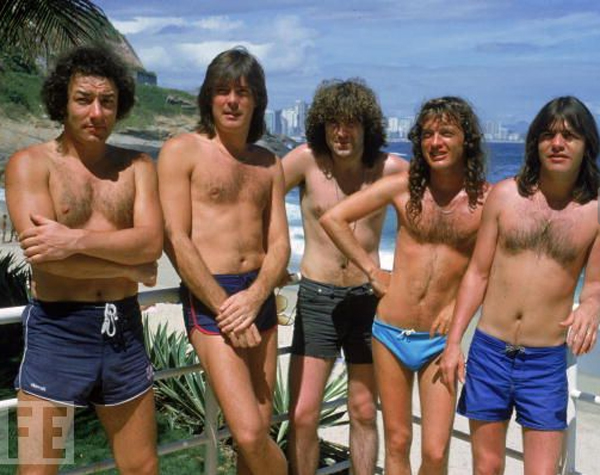– 3 essential albums, an overlooked gem, a wildcard, one to avoid, and the best of the rest –
“I’m sick to death of people saying we’ve made eleven albums that sounds exactly the same. In fact, we’ve made twelve albums that sound exactly the same.” So says, AC/DC lead guitarist and fifty-nine year old Scottish Australian schoolboy, Angus Young. While other bands have been cursed by following the same formula over and over again (Francis Rossi, please stand up), AC/DC have turned it to their advantage.
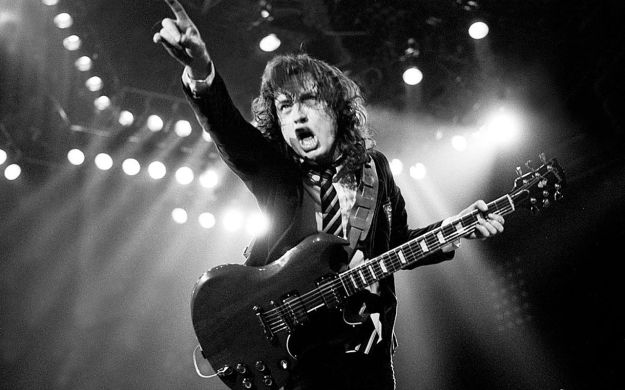 Over fourteen studio albums, the band have stuck to a blueprint of blues-based heavy rock. 99% of their songs follow the same format – counterpoint guitar riffs from brothers Angus and Malcolm, steady 4/4 drum beats, driving bass lines, soaring vocals and finally, a solo from Angus. There’s no room for piano, no room for strings and the only backing vocals you get are from the rest of the band, who are about as tuneful as an after-hours pub karaoke session.
Over fourteen studio albums, the band have stuck to a blueprint of blues-based heavy rock. 99% of their songs follow the same format – counterpoint guitar riffs from brothers Angus and Malcolm, steady 4/4 drum beats, driving bass lines, soaring vocals and finally, a solo from Angus. There’s no room for piano, no room for strings and the only backing vocals you get are from the rest of the band, who are about as tuneful as an after-hours pub karaoke session.
Lead vocal duties divide the band into two eras – the band’s formative years were helmed by fellow Scottish Australian Bon Scott, but his untimely death in 1980 saw the band enter a more commercial phase under the screams of flat-cap loving Geordie Brian Johnson.
But regardless of what you may have heard, there are differences between their albums. Each of their 1970s albums follow a progressive arc, until they settled on their massive world conquering sound as they entered the 1980s. Albums since that point have struggled to find that same high level of quality, acting mainly as a springboard for the band to go out on the road for yet another world tour.
Start off with: Highway To Hell (1979, Atlantic Records)
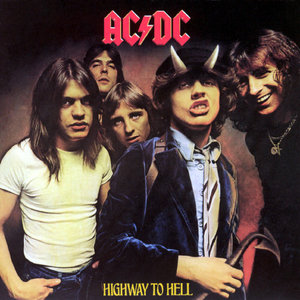 The album that saw the AC/DC break America was also their swansong with Bon Scott, who would die just months later. Up to this point all the studio albums were produced by former ‘60s Australian beat group stars Harry Vanda and George (older brother of Angus and Malcolm) Young. For Highway To Hell, the band would enlist the production duties of Robert John “Mutt” Lange – notable amongst other things for producing Def Leppard’s Hysteria, and marrying Shania Twain.
The album that saw the AC/DC break America was also their swansong with Bon Scott, who would die just months later. Up to this point all the studio albums were produced by former ‘60s Australian beat group stars Harry Vanda and George (older brother of Angus and Malcolm) Young. For Highway To Hell, the band would enlist the production duties of Robert John “Mutt” Lange – notable amongst other things for producing Def Leppard’s Hysteria, and marrying Shania Twain.
Lange’s production revitalised the band. Overnight they changed from a noisy rock band from the backwaters of Australia into a household-name stadium rock band. Aside from the title track – typically played by the band in their live shows to open their encore – not much else from the album has survived into the band’s live set to this day; but this is probably the most consistent of all their albums.
Follow that with: Back In Black (1980, Atlantic Records)
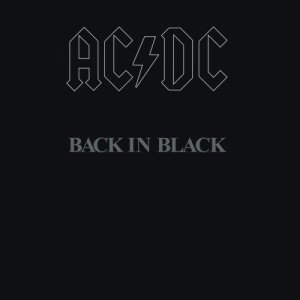 After Bon Scott’s death, the band could have called it a day. Most bands would have, if they’d lost their lead singer. But AC/DC were always more about guitars than vocals. After auditioning half of London for the job (including Gary Holton who would go on to play Wayne in TV’s Auf Wiedersehen, Pet), the band settled on Brian Johnson. The resulting album is a tribute – a relatively sincere one, considering the medium – to their fallen bandmate. Opener Hells Bells sets the scene with a tolling bell, before the band slowly introduce their new banshee vocalist.
After Bon Scott’s death, the band could have called it a day. Most bands would have, if they’d lost their lead singer. But AC/DC were always more about guitars than vocals. After auditioning half of London for the job (including Gary Holton who would go on to play Wayne in TV’s Auf Wiedersehen, Pet), the band settled on Brian Johnson. The resulting album is a tribute – a relatively sincere one, considering the medium – to their fallen bandmate. Opener Hells Bells sets the scene with a tolling bell, before the band slowly introduce their new banshee vocalist.
Back In Black, also produced by Robert John “Mutt” Lange, is probably AC/DC’s most commercial-sounding record. Singles such as the title track and You Shook Me All Night Long saw the album become the best-selling rock album of the 1980s. It’s currently tied with Pink Floyd’s Dark Side Of The Moon as the second best-selling album of all time (after Michael Jackson’s Thriller).
Just like VHS beat Betamax as the consumer’s choice of video in the 1980s (a fact commonly attributed to the pornography industry selecting the fledgling VHS technology as the way forward), Back In Black outstripped all other contenders in record sales by being purchased by every strip club in America. You Shook Me All Night Long has soundtracked a lot of lapdances – it’s not heavy rock, it’s stripper rock! Def Leppard would achieve the same feat later in the decade with Pour Some Sugar On Me, from their best-selling Hysteria album – a song that sounds like it’s describing a sexual act, but was probably written about their one-armed drummer Rick Allen making a cup of tea.
Oh, and Shoot To Thrill? The best middle-eight instrumental section in rock music, hands down.
Then get: Powerage (1978, Atlantic Records)
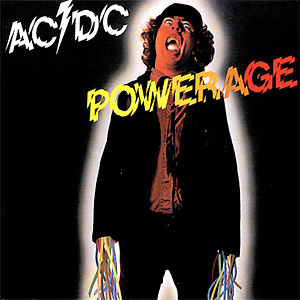 Powerage is AC/DC’s greatest achievement – the last thing they did before they crossed over into the mainstream. At this point, it’s all still them; there’s no ‘hit-making’ hot-shot producer in the background to claim any credit. The album is no-frills rock ‘n roll from start to finish, although it does come with a celebrity endorsement – Rolling Stone Keith Richards earmarked it as his favourite AC/DC record.
Powerage is AC/DC’s greatest achievement – the last thing they did before they crossed over into the mainstream. At this point, it’s all still them; there’s no ‘hit-making’ hot-shot producer in the background to claim any credit. The album is no-frills rock ‘n roll from start to finish, although it does come with a celebrity endorsement – Rolling Stone Keith Richards earmarked it as his favourite AC/DC record.
Aside from Sin City, not much else from the record has survived into the band’s live set to this day. Still, opener Rock ‘N Roll Damnation is almost the quintessential AC/DC song, and Riff Raff has one of the band’s longest intros, building up for over a minute and finally released when Angus Young bends an open D-chord that sounds as sick as anything.
But it’s the slow-burn of songs like Down Payment Blues that really wins people over, on Powerage, the most introspective of their records.
Criminally overlooked: The Razor’s Edge (1990, Atco Records)
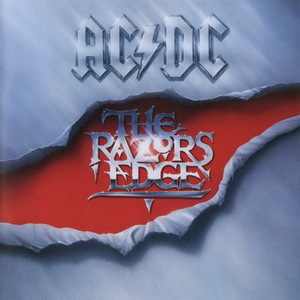 In March 1990, Aerosmith’s Joe Perry mentioned to Guitar World magazine that ‘people put us down for [using outside songwriters], but I wonder how an AC/DC record would sound if they’d pull somebody like Jim Vallance into the songwriting process. Would they get another one-song record with Heatseeker, or would you get a whole album that was that cool?”
In March 1990, Aerosmith’s Joe Perry mentioned to Guitar World magazine that ‘people put us down for [using outside songwriters], but I wonder how an AC/DC record would sound if they’d pull somebody like Jim Vallance into the songwriting process. Would they get another one-song record with Heatseeker, or would you get a whole album that was that cool?”
At the time, AC/DC were actually in the process of doing something along these lines. While that September’s The Razor’s Edge was written in its entirety by Angus and Malcolm Young, it was produced by Bruce Fairbairn – the man who had produced Aerosmith’s successful comeback albums, Permanent Vacation (1987) and Pump (1989).
It’s almost a cliché to disregard any of the post-Back In Black albums as cannon-fodder (pun very much intended); but The Razor’s Edge saw the end of a run of ‘80s albums where the band had very much lost their way. From this point on, with albums produced by the likes of Rick Rubin and Brendan O’Brien, they spent a bit more time and effort on their studio output.
The album’s opener, Thunderstruck, is another contender for the quintessential AC/DC song and concrete proof that they were still as relevant to ‘90s rock music as they were in the ‘70s and ‘80s.
The long-shot: For Those About to Rock (We Salute You) (1981, Atlantic Records)
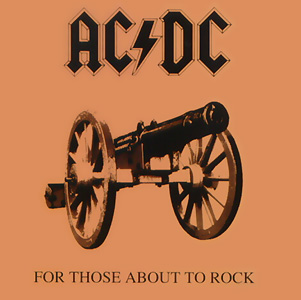 The third and final album produced by Robert John “Mutt” Lange fails to match the quality of its two predecessors, but it does have its moments. It’s so close to Back In Black and Highway To Hell in its chronology that you can almost hear some of the magic of those records in its grooves. Of course, on the other side of the coin, the album’s other next-door neighbour is 1983’s Flick Of The Switch, where their mid-‘80s rot really set in.
The third and final album produced by Robert John “Mutt” Lange fails to match the quality of its two predecessors, but it does have its moments. It’s so close to Back In Black and Highway To Hell in its chronology that you can almost hear some of the magic of those records in its grooves. Of course, on the other side of the coin, the album’s other next-door neighbour is 1983’s Flick Of The Switch, where their mid-‘80s rot really set in.
The album-opening title trackremains a firm live fixture – they’ve closed their sets with the track for the last thirty three years – and the track serves as the true peak of their creative accomplishments. It was all steadily downhill from this point on.
Avoid like the plague: ’74 Jailbreak (1984, Atlantic Records)
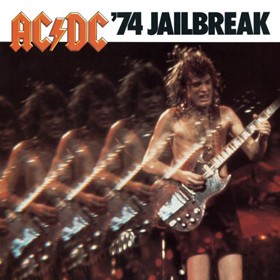 An EP – usually priced as a full-length album – containing just twenty four minutes of material, ’74 Jailbreak is a cynical cash-in release on the behalf of Atlantic Records. It’s essentially a small collection of leftover songs that didn’t make the international releases at the start of the band’s career (several of these early albums were combinations of songs from more than one Australian release, with some omissions made in the interests of running time).
An EP – usually priced as a full-length album – containing just twenty four minutes of material, ’74 Jailbreak is a cynical cash-in release on the behalf of Atlantic Records. It’s essentially a small collection of leftover songs that didn’t make the international releases at the start of the band’s career (several of these early albums were combinations of songs from more than one Australian release, with some omissions made in the interests of running time).
This really is what you buy only when you have all of the other AC/DC albums, even the questionable mid-‘80s ones.
Best compilation: Iron Man 2 (O.S.T.) (2010)
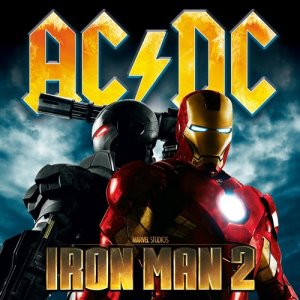 AC/DC must be one of the only major bands in the world without an official ‘greatest hits’ compilation. Sure, there are box-sets – Bonfire (1997) and BackTracks (2009) – but these aren’t compilations in the true sense of the word. The band has avoided issuing a simple collection of their singles – something I really respect them for.
AC/DC must be one of the only major bands in the world without an official ‘greatest hits’ compilation. Sure, there are box-sets – Bonfire (1997) and BackTracks (2009) – but these aren’t compilations in the true sense of the word. The band has avoided issuing a simple collection of their singles – something I really respect them for.
Of the two soundtracks they have released – 1986’s Who Made Who (the soundtrack to Stephen King’s Maximum Overdrive) and 2010’s Iron Man 2 – it is the later release that stands as the nearest thing to a ‘greatest hits’ release, split roughly 50/50 between the Bon Scott and Brian Johnson eras.
It’s just a shame the film is so boring!
Best live album: AC/DC Live (1992, Atco Records)
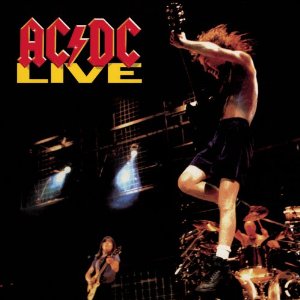 1978’s If You Want Blood You’ve Got It captured the live sound of the Bon Scott era, but its raw energy was plagued by a muddy Vanda / Young production. 1992’s AC/DC Live doesn’t suffer from that problem. Taken from 1991’s The Razor’s Edge tour, the album offered an authentic live recording of the band. Bruce Fairbairn had got close to capturing that sound on record (on The Razor’s Edge) and was invited back to produce the live record.
1978’s If You Want Blood You’ve Got It captured the live sound of the Bon Scott era, but its raw energy was plagued by a muddy Vanda / Young production. 1992’s AC/DC Live doesn’t suffer from that problem. Taken from 1991’s The Razor’s Edge tour, the album offered an authentic live recording of the band. Bruce Fairbairn had got close to capturing that sound on record (on The Razor’s Edge) and was invited back to produce the live record.
Live At Donington, the album’s companion piece video, is also worth checking out. Recording during their third headlining appearance at the British rock festival, it’s essentially the same set as can be found on the AC/DC Live record (and on every subsequent tour for that matter). One nice little bonus extra on the DVD / Blu Ray version is a commentary track comprised of an interview with the Young brothers as they talk though the concepts and directions behind each of their albums. You know, those albums that are supposedly all the same…
